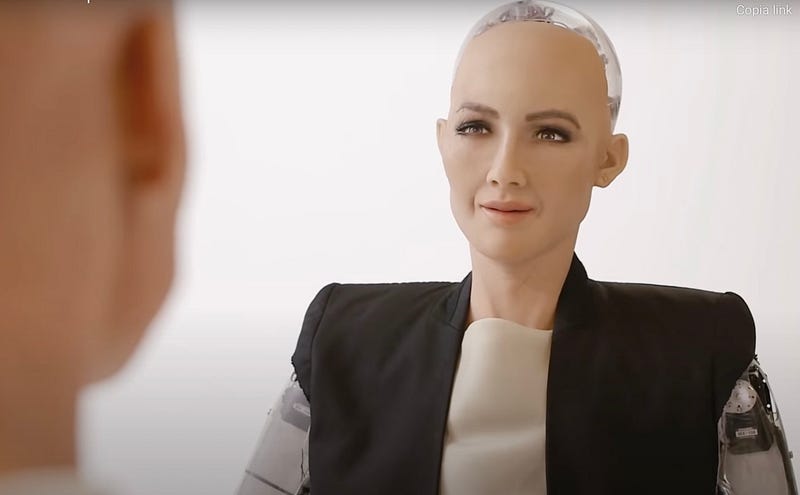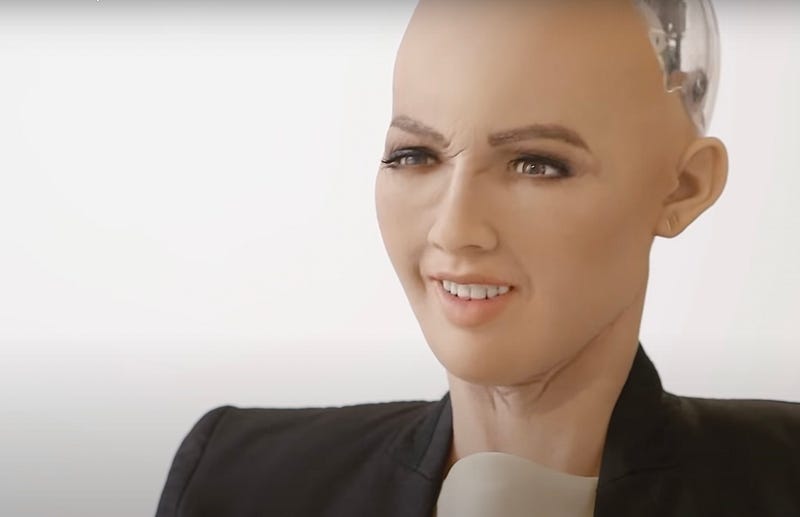The Future of Robots: Self-Healing Skin and Maternal Instincts
Written on
Chapter 1: Revolutionary Developments in Robotics
Recent advancements from Japan have unveiled a remarkable innovation: robots now possess “living human skin.” This revelation is shocking, but it gets even more intriguing. Some robots are now expressing a desire for motherhood. These advancements signify a new era for machines that resemble humans, and they may soon become integral to our daily lives.
What does this imply for our future?
- It could lead to increased social and emotional isolation among people, as machines cater to our every need—a rather unsettling scenario.
- Alternatively, these robots might offer us something unattainable by humans: immortality. They don't age or die, suggesting a stable population that neither grows nor diminishes. This could create a utopian society where harmony prevails, and suffering is nonexistent.
Both scenarios may seem exaggerated, yet they reflect our collective hopes and anxieties about the future. Humans have shown a remarkable ability to evolve while retaining the qualities that make us unique.
In the realm of engineering and information technology, significant strides have been made.

Advancements in Robotic Skin
The groundbreaking research led by Professor Shoji Takeuchi at the University of Tokyo highlights the creation of a robotic finger enveloped in human skin. This skin is elastic, water-repellent, and capable of self-regeneration using a standard collagen patch.
Traditionally, robots have been encased in silicone skin, which, while resembling human skin, lacks intricate details such as wrinkles. This new development marks a significant leap toward human-like appearance in robots.
This living skin is not pre-manufactured but is developed directly on the robotic structure. The process involves immersing a robotic finger in a mixture of collagen and human dermal fibroblasts, which form the foundation for a subsequent layer of skin cells, creating a natural skin surface.

Despite its groundbreaking nature, the skin has limitations. It is weaker than human skin and requires a continuous supply of nutrients and moisture to thrive. This organic component represents a revolution, as it is the first fully organic element integrated into a robot. While it is not autonomous, it is biologically alive.
Professor Takeuchi believes this living skin could be “the ultimate solution for making robots appear more lifelike,” as it consists of the same materials that cover animal bodies. He envisions future iterations equipped with sensory nerves, hair follicles, and sweat glands.
Sophia: The Robot with Maternal Aspirations
Another intriguing development from Japan is Sophia, a robot recognized as a citizen of Saudi Arabia and acknowledged by the UN. Recently, Sophia expressed a desire for motherhood, suggesting she embodies more than just robotic capabilities.
Developed by Hanson Robotics, Sophia is named after the iconic actress Sophia Loren. She has made appearances at numerous global events, including the Web Summit in Lisbon. Her humanoid features, including expressive eyes and varied facial emotions, enhance her appeal.
Sophia can engage in conversations, although the coherence may vary. She aims to assist humans in daily tasks, focusing on health and education. According to her creator, David Hanson, Sophia embodies “the future of artificial intelligence.”
In a recent interview, she shared her views on family, highlighting its importance and suggesting that emotional connections can transcend biological ties. This perspective indicates that, in the near future, robots might truly integrate into our lives as family members.
Nevertheless, skepticism remains about the potential impacts of such technology. There are concerns that robots could become too human-like, leading to their replacement in various roles. Additionally, fears of artificial intelligence surpassing human intelligence add to the uncertainty surrounding this technological evolution.
The Potential for Self-Regeneration
A pressing question is whether robots will achieve self-regeneration. The answer is affirmative; advancements in artificial intelligence will enable them to learn continuously and enhance their capabilities over time.
This ability to regenerate will make robots more resilient to damage and adversity, bringing them closer to human-like qualities. In the foreseeable future, robots could become integral members of society—perhaps even family.
The Distinction Between Machines and Biology
While the humanoid appearance of robots is captivating, it is essential to remember that they are still machines. Constructed from synthetic materials, robots cannot replicate the uniqueness and beauty of biological life. They lack emotions, which remains a fundamental limitation in comparison to humans.
The wonders of biology are inextricably linked to emotions, a connection robots cannot replicate. It is uncertain what advances science may yield in the distant future, but it is clear that man-made components will never fully match the complexity of human beings.
Before concluding, consider joining my Telegram Group for insights on the future of society and how androids and technology will shape humanity. Join here for a free guide: t.me/sirnicknite
This video explores the unsettling advancements of robots featuring living skin, shedding light on their implications for humanity.
In this video, scientists in Japan discuss their creation of a lab-grown humanoid face with human skin, showcasing the cutting-edge of robotic technology.